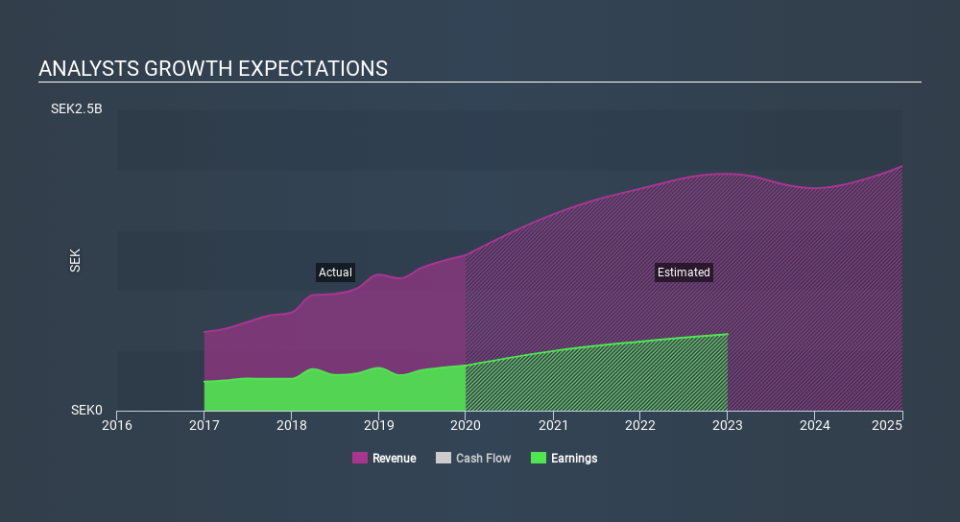Paradox Interactive AB (publ) Beat Analyst Estimates: See What The Consensus Is Forecasting For Next Year

As you might know, Paradox Interactive AB (publ) (STO:PDX) just kicked off its latest annual results with some very strong numbers. The company beat expectations with revenues of kr1.3b arriving 3.6% ahead of forecasts. Statutory earnings per share (EPS) were kr3.54, 9.4% ahead of estimates. Earnings are an important time for investors, as they can track a company's performance, look at what top analysts are forecasting for next year, and see if there's been a change in sentiment towards the company. So we collected the latest post-earnings statutory consensus estimates to see what could be in store for next year.
See our latest analysis for Paradox Interactive
Taking into account the latest results, the most recent consensus for Paradox Interactive from four analysts is for revenues of kr1.63b in 2020, which is a sizeable 26% increase on its sales over the past 12 months. Statutory earnings per share are expected to surge 32% to kr4.68. In the lead-up to this report, analysts had been modelling revenues of kr1.62b and earnings per share (EPS) of kr4.46 in 2020. Analysts seem to have become more bullish on the business, judging by their new earnings per share estimates.
The consensus price target was unchanged at kr149, implying that the improved earnings outlook is not expected to have a long term impact on value creation for shareholders. It could also be instructive to look at the range of analyst estimates, to evaluate how different the outlier opinions are from the mean. The most optimistic Paradox Interactive analyst has a price target of kr177 per share, while the most pessimistic values it at kr115. These price targets show that analysts do have some differing views on the business, but the estimates do not vary enough to suggest to us that some are betting on wild success or utter failure.
Zooming out to look at the bigger picture now, one of the ways we can make sense of these forecasts is to see how they measure up both against past performance, and against industry growth estimates. Next year brings more of the same, according to analysts, with revenue forecast to grow 26%, in line with its 25% annual growth over the past five years. Compare this with the wider market, which analyst estimates (in aggregate) suggest will see revenues grow 10% next year. So it's pretty clear that Paradox Interactive is forecast to grow substantially faster than its market.
The Bottom Line
The biggest takeaway for us from these new estimates is that the consensus upgraded its earnings per share estimates, showing a clear improvement in sentiment around Paradox Interactive's earnings potential next year. Fortunately, analysts also reconfirmed their revenue estimates, suggesting sales are tracking in line with expectations - and our data does suggest that Paradox Interactive's revenues are expected to grow faster than the wider market. The consensus price target held steady at kr149, with the latest estimates not enough to have an impact on analysts' estimated valuations.
Even so, the longer term trajectory of the business is much more important for the value creation of shareholders. We have forecasts for Paradox Interactive going out to 2024, and you can see them free on our platform here.
Another thing to consider is whether management and directors have been buying or selling stock recently. We provide an overview of all open market stock trades for the last twelve months on our platform, here.
If you spot an error that warrants correction, please contact the editor at editorial-team@simplywallst.com. This article by Simply Wall St is general in nature. It does not constitute a recommendation to buy or sell any stock, and does not take account of your objectives, or your financial situation. Simply Wall St has no position in the stocks mentioned.
We aim to bring you long-term focused research analysis driven by fundamental data. Note that our analysis may not factor in the latest price-sensitive company announcements or qualitative material. Thank you for reading.


